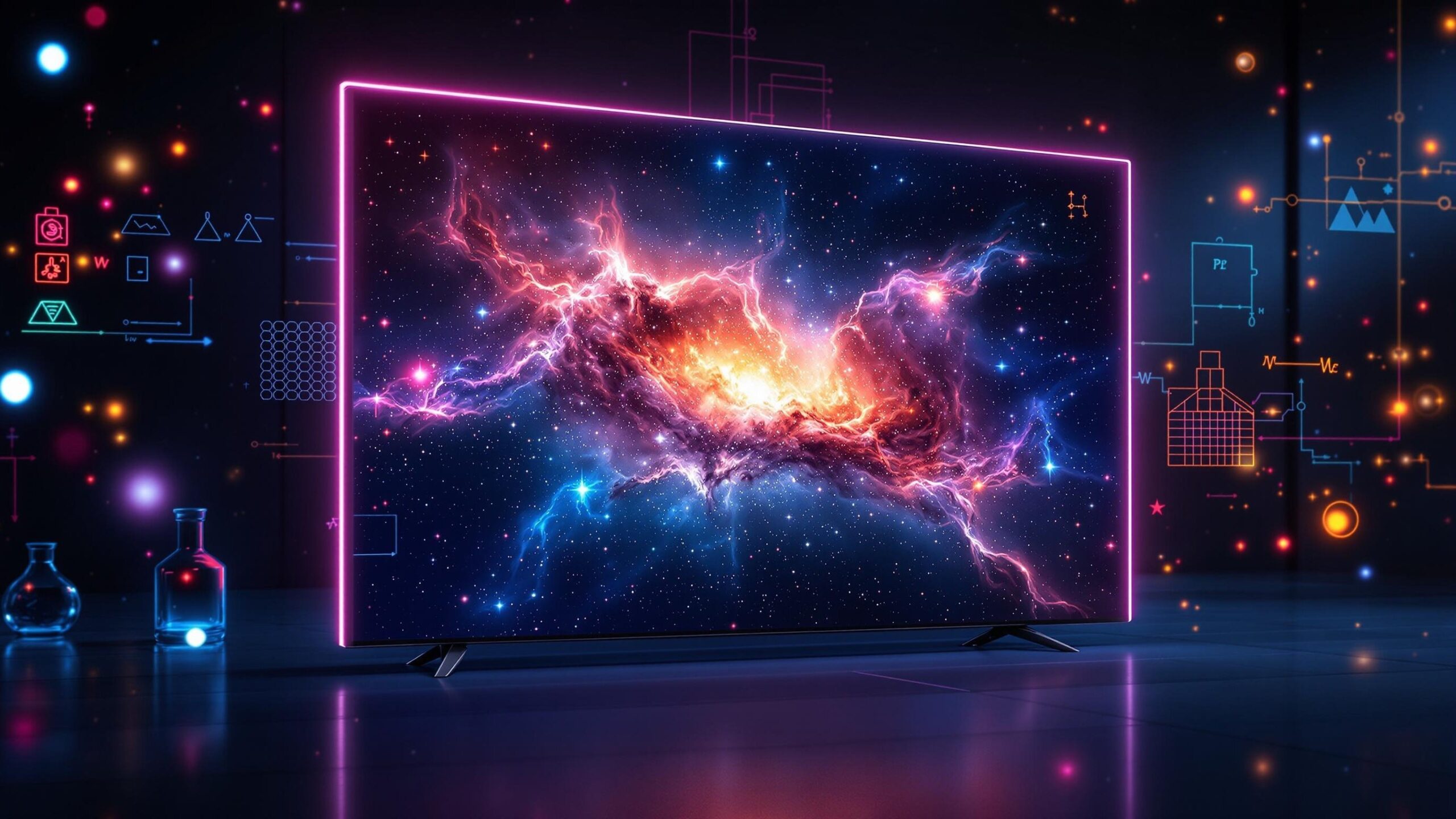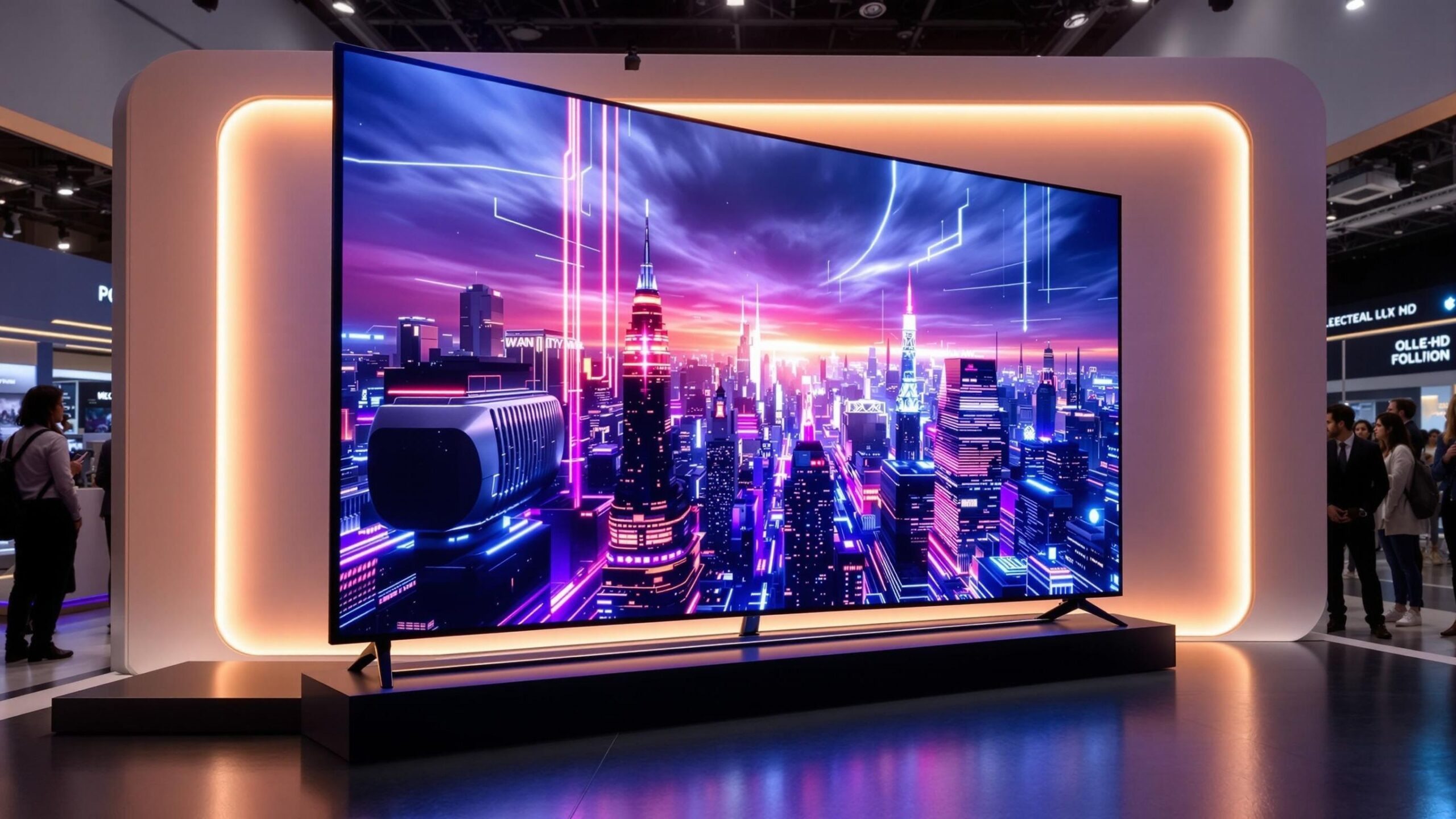OLED TVs are widely considered the pinnacle of modern display technology. From their deep blacks and stunning colors to their razor-thin designs, OLEDs have taken the world of home entertainment by storm. But what exactly makes them so extraordinary? Beneath their elegant screens lies a complex world of physics, chemistry, and engineering. In this article, we’ll break down the science behind OLED TVs—keeping the explanations technical yet understandable—so you can appreciate not just the picture quality, but the brilliant science that powers it.
Understanding OLED: A New Kind of Light
OLED stands for Organic Light-Emitting Diode. Unlike traditional LED or LCD TVs, OLEDs don’t rely on a backlight to shine through layers. Instead, each pixel in an OLED screen produces its own light. This is known as self-emissive technology. When an electric current flows through a special organic material inside each pixel, it emits light directly. The result is richer color, better contrast, and a display that can be incredibly thin and flexible. This self-emissive property is the cornerstone of OLED’s performance advantages. With the ability to turn individual pixels on and off completely, OLEDs can display perfect blacks right next to bright whites—something no backlit technology can match.
The Physics of Light Emission: How OLEDs Glow
At the heart of OLED technology is a phenomenon called electroluminescence. This simply means light is produced when electricity is applied to a material. OLEDs use organic (carbon-based) molecules that glow when energized.
Inside each pixel is a tiny sandwich of multiple layers—each only a few nanometers thick. When voltage is applied, electrons (which carry negative charge) are pushed in from one side, while holes (positively charged spaces where electrons are missing) are introduced from the other. These two charges meet in the middle layer, called the emissive layer. When an electron meets a hole, they combine to form an exciton, which is an excited state. This exciton quickly collapses and releases energy in the form of a photon—that’s the light you see on your screen. The color of the light depends on the chemical makeup of the emissive material. Different materials produce red, green, or blue light. This process happens millions of times per second across millions of pixels, each working independently to produce a stunning, precise image.
The Chemistry of Organic Layers: Small Molecules Doing Big Things
Despite the high-tech appearance of OLED TVs, the core of the technology lies in organic chemistry. The term “organic” here refers to carbon-based compounds. OLEDs are made from specially engineered molecules or polymers that conduct electricity and emit light. Each layer of an OLED pixel serves a different function. Some layers are designed to help inject electrons or holes, while others transport these charges to the right location. The most important layer is the emissive layer, where light is actually produced.
The molecular design of these materials is incredibly important. Scientists fine-tune the structure of each compound to control its energy levels, stability, and efficiency. The goal is to create a material that can efficiently absorb electrical energy, emit bright light, and do so for tens of thousands of hours without degrading. Some OLEDs use fluorescent materials, which only use a portion of the available energy. More advanced OLEDs use phosphorescent materials, which take advantage of quantum mechanics to use almost all of the energy for light emission—making them far more efficient.
Why OLEDs Don’t Need a Backlight—and Why That’s a Big Deal
Most other TV technologies—like LCD and QLED—require a backlight. In those systems, a light source shines through filters and liquid crystals to create the image. That means when a scene is supposed to be dark, there’s still some light leaking through. You never get true black, only dark gray. OLED solves this problem completely. Since each pixel emits its own light, it can be turned off entirely. When the screen shows black, it really is black—because that pixel is producing no light at all. This is why OLED TVs have what’s called infinite contrast ratio. It’s not a marketing term; it’s a real technical advantage that changes how we perceive images. This absence of a backlight also means OLED screens can be made much thinner and lighter. In fact, some OLED panels are just a few millimeters thick. That opens the door for futuristic designs like rollable TVs and transparent displays.
How Colors Are Formed in OLED TVs
A full-color OLED screen must produce red, green, and blue light—just like any other digital display. These are the primary colors of light that, when combined at different intensities, form every color we can see. There are two main ways to achieve this in OLED TVs. One method uses separate red, green, and blue organic compounds for each subpixel. These materials are deposited precisely using fine metal masks, which is technically challenging and limits resolution. The more common method in large-screen OLED TVs—like those made by LG—uses a white OLED emitter combined with color filters. The OLED produces broad-spectrum white light, and each subpixel passes through a red, green, or blue filter. This approach simplifies manufacturing and makes it easier to produce large, high-resolution panels. However, it also reduces brightness slightly because the filters absorb some of the light.
The challenge for OLED engineers is always to maximize color purity and brightness while maintaining efficiency and lifespan. This involves choosing the right materials and tuning them at the molecular level.
The Role of Thin-Film Transistors (TFTs): Controlling Each Pixel
Each OLED pixel needs to be controlled individually, both for turning on and off and for adjusting brightness. This is accomplished with tiny switches called thin-film transistors, or TFTs. These transistors are embedded in a layer beneath the OLED structure and form what’s called the backplane of the display. Each subpixel typically uses two transistors: one to control the current flowing to the OLED material and another to store the voltage for that pixel during each refresh cycle. These transistors are made from materials like low-temperature polysilicon (LTPS) or indium gallium zinc oxide (IGZO), depending on the performance needs. The backplane ensures that every pixel receives the exact amount of current needed to produce the desired brightness. This precision is what allows OLED TVs to render fine details and smooth gradients, even in dark scenes.
Why OLED Response Time is So Fast
OLEDs have another major technical advantage: they’re incredibly fast. Because each pixel turns on and off electronically, without needing to move liquid crystals or modulate a backlight, response times are measured in microseconds. This is especially important for gaming and fast-moving video. With such quick pixel changes, OLEDs can display motion without blurring, stuttering, or ghosting. Combined with features like variable refresh rate (VRR) and low input lag, this makes OLED TVs a favorite for serious gamers and sports fans.
In contrast, even the fastest LED-LCD displays can’t match OLED’s pixel-switching speed because of the slower physics involved in backlight modulation and crystal alignment.
The Burn-In Question: What’s the Real Risk?
One concern that often arises with OLED is the potential for “burn-in.” This happens when a static image—like a news ticker or a game HUD—stays on screen too long, causing uneven wear on the organic material and leaving a ghost image. The reason this happens is that the organic materials in each subpixel degrade over time as they emit light. The more a pixel is used, the dimmer it can become. If some pixels are used more heavily than others, the difference in brightness can become noticeable. However, modern OLED TVs use several technologies to prevent this. Pixel-shifting moves the image slightly over time to avoid stress on any one area. Automatic brightness limiters (ABLs) prevent pixels from operating at maximum power for extended periods. There are also screen refresh functions that help balance pixel wear. In typical use—especially with a variety of content—burn-in is highly unlikely. Still, it’s good practice to avoid static images for long periods and use the built-in screen management features.
Efficiency and Lifetime: The Engineering Balance
Balancing brightness, efficiency, and longevity is a core challenge for OLED engineering. Blue OLED materials, in particular, tend to degrade faster than red or green ones. That’s why OLED manufacturers are constantly researching new blue emitters that can last longer and maintain brightness. One approach to improving lifespan is using phosphorescent materials, which are more efficient than fluorescent ones because they use both singlet and triplet excitons. This allows nearly all of the energy from each electron-hole recombination event to be converted into light.
Thermally activated delayed fluorescence (TADF) is another emerging technology that aims to achieve similar efficiency with better material stability. By converting non-radiative triplet states into radiative singlet states using heat, TADF materials promise high brightness with improved lifespan. OLED engineers must also carefully design the thickness and arrangement of layers to minimize voltage requirements and maximize charge balance. Even slight imbalances in the flow of electrons and holes can reduce efficiency and increase heat generation, which shortens the life of the display.
How OLED Differs from QLED and MicroLED
QLED, or Quantum-dot LED, is actually a variation of traditional LED-LCD technology. It uses a quantum dot film to improve color, but still relies on a backlight. That means QLED displays can be very bright but can’t produce true blacks or perfect contrast like OLED.
MicroLED, on the other hand, is a newer self-emissive technology that uses microscopic inorganic LEDs for each pixel. Like OLED, MicroLED doesn’t need a backlight, and it can deliver incredible brightness and longevity. However, MicroLED is still expensive to produce, especially at TV scale. The manufacturing challenges are significant, and pixel pitch must be extremely tight to match 4K or 8K resolutions.
For now, OLED remains the most mature and accessible self-emissive display technology on the market, offering a blend of performance, design, and affordability that neither QLED nor MicroLED can yet match.
The Future of OLED: Brighter, Smarter, More Flexible
OLED technology continues to evolve. LG’s OLED evo panels, for example, use a new green material and refined layer design to increase brightness by 20–30%. Researchers are also developing tandem OLED stacks, where multiple emissive layers are used to increase light output and extend lifespan. On the horizon are flexible OLEDs that can fold, bend, or roll up—perfect for futuristic TVs, smartphones, and wearable devices. Transparent OLEDs are already being used in some commercial applications and may eventually find their way into consumer devices. As production becomes more efficient and new materials are discovered, OLEDs will only get better—brighter, more durable, and more versatile.
The Science that Powers the Picture
OLED TVs are more than just sleek pieces of consumer tech—they’re the result of decades of scientific discovery and engineering mastery. From the chemistry of light-emitting organic molecules to the physics of excitons and transistors, every pixel is a triumph of human ingenuity. What makes OLED TVs so special isn’t just what you see—it’s what’s happening behind the scenes. Each perfect black, each vivid color, each crisp frame is backed by a complex interplay of materials science, electronics, and design. Understanding the science not only deepens your appreciation—it shows why OLED isn’t just a trend. It’s the future of visual technology.
OLED TV Reviews
Explore Philo Street’s Top 10 Best OLED TV Reviews! Dive into our comprehensive analysis of the leading OLED TV products, complete with a detailed side-by-side comparison chart to help you choose the perfect protection for your devices.




